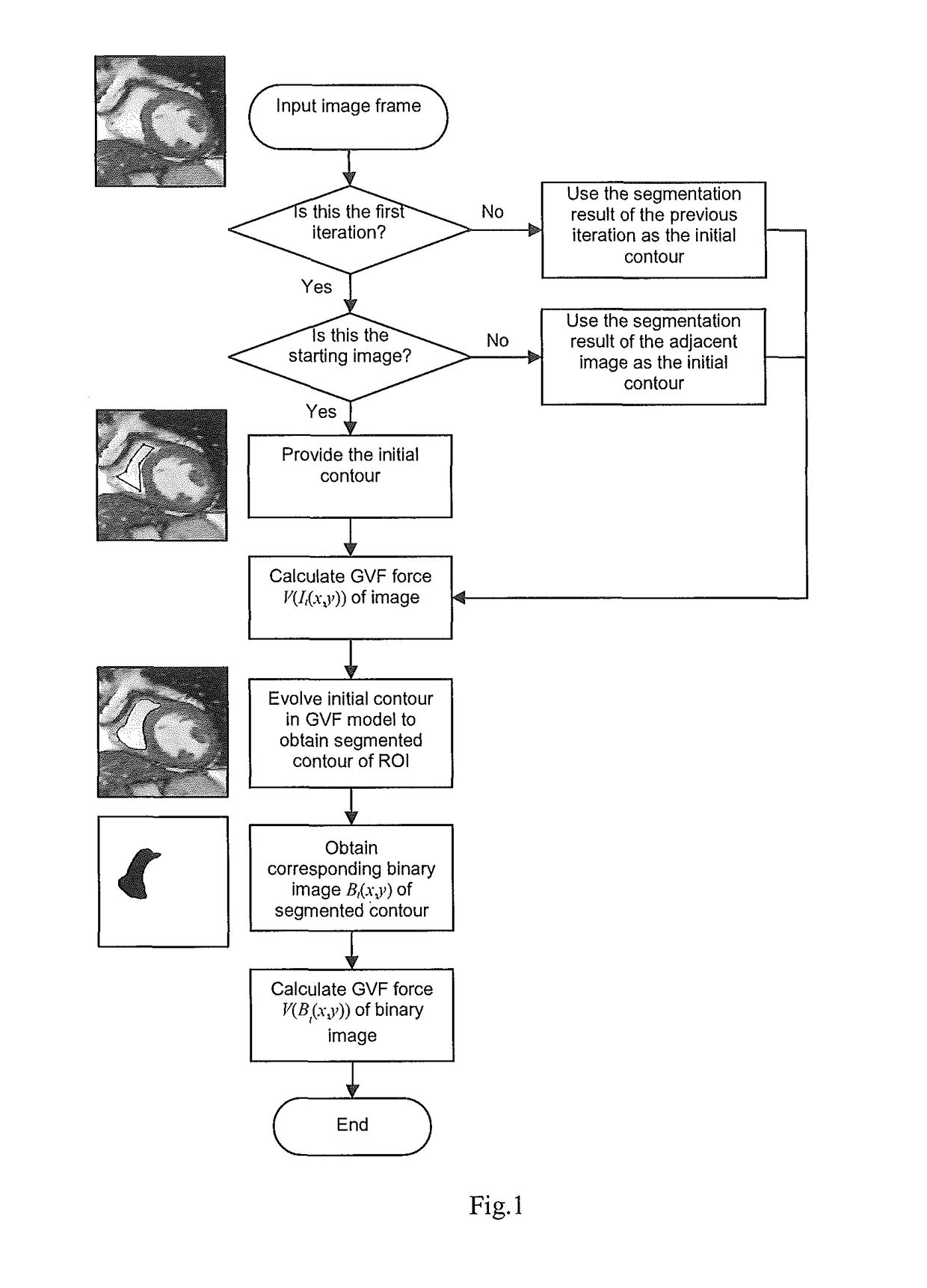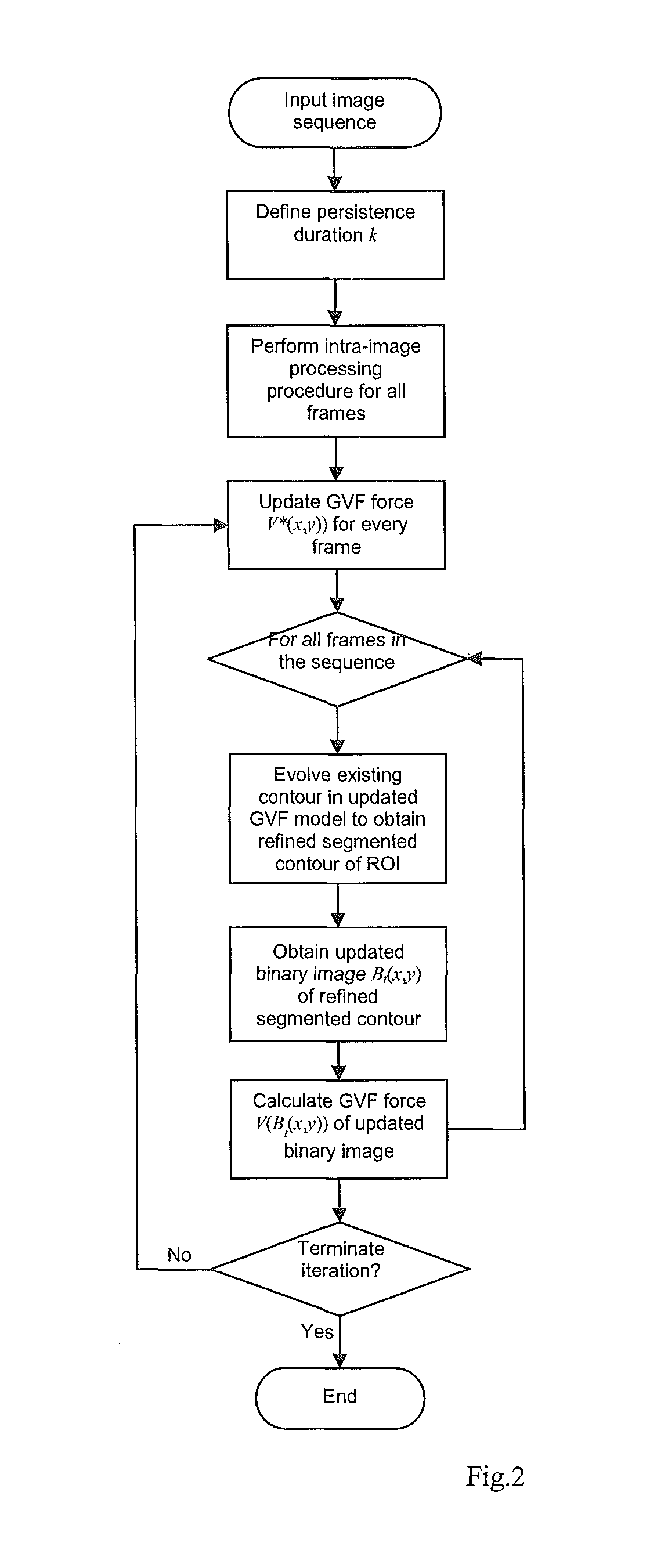Segmentation of cardiac magnetic resonance (CMR) images using a memory persistence approach
a cardiac magnetic resonance and segmentation technology, applied in image enhancement, image analysis, instruments, etc., can solve the problems of time-consuming and tedious manual delineation of anatomical structures, limited by inter- and intra-observer variability, and the difficulty of accurate lv and rv segmentation, so as to increase the flexibility of the proposed cs-fcm algorithm
- Summary
- Abstract
- Description
- Claims
- Application Information
AI Technical Summary
Benefits of technology
Problems solved by technology
Method used
Image
Examples
Embodiment Construction
1. Embodiment of the “Memory Persistence” Aspect of the Invention
[0032]The following explanation denotes a sequence of two-dimensional (2D) CMR image frames from a single cardiac cycle as:
It(x,y) t=1,2, . . . ,N
where It(x,y) denotes the 2D image frame at time t, and N is the total number of frames in a single cardiac cycle.
[0033]From these images it is intended to generate a contour, and to produce corresponding segmented binary images in which the intensity of the pixels within the contour is set to 255, and the intensity of other pixels is set to 0. The segmented binary images are denoted by
Bt(x,y) t=1,2, . . . ,N
where Bt(x,y) denotes the 2D binary image from the segmentation of the image frame It(x,y) at time t.
[0034]To segment a given frame at time t, instead of solely using the information from the current image It(x,y) (as did most of the existing methods), the proposed framework incorporates into the segmentation techniques information from segmented binary images of previo...
PUM
 Login to View More
Login to View More Abstract
Description
Claims
Application Information
 Login to View More
Login to View More - R&D
- Intellectual Property
- Life Sciences
- Materials
- Tech Scout
- Unparalleled Data Quality
- Higher Quality Content
- 60% Fewer Hallucinations
Browse by: Latest US Patents, China's latest patents, Technical Efficacy Thesaurus, Application Domain, Technology Topic, Popular Technical Reports.
© 2025 PatSnap. All rights reserved.Legal|Privacy policy|Modern Slavery Act Transparency Statement|Sitemap|About US| Contact US: help@patsnap.com



